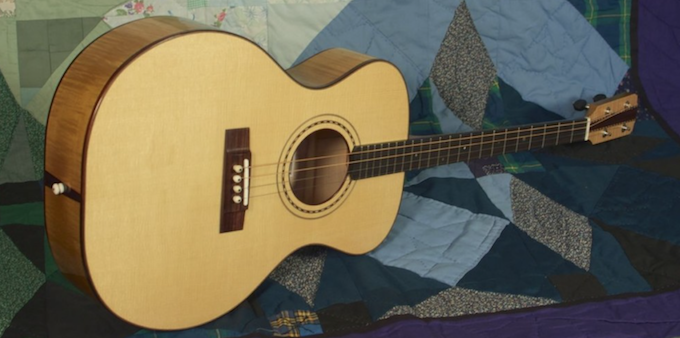Cavins tenor guitar - Part 2: Sonic representations of wasabi, grapefruit, and orange
This is Part 2 of my series chronicling design, construction, and eventual delivery of a tenor guitar built by David Cavins. See Part 1 here.
As David and I begin discussing this project, he asks me think about what I want it to sound like. But rather than only sticking to the standard lexicon that guitar geeks use (e.g., “warm,” “dry,” “woody”, “lush”, etc.), he encourages me to come up with some other descriptive works to translate the sound in my head into other modes. Here’s a snippet of the email I wrote, trying to capture these sounds:
"Spicy, but like wasabi, rather than jalapeños...there's heat, but it decays quickly so that the flavor of each string can shine.
Another flavor that might be a good descriptor is grapefruit: refreshing, some edge to it, with a shade of sweetness. Not as light or sweet as lemonade; more personality than orange juice.
Translating sound to color, I'm thinking orange. But not electric or neon orange, but instead the vibrant, organic orange of leaves changing color in the fall."
Amazingly, this description makes sense to him. He also has me write about other guitars that I’ve played and liked/disliked, so that we can get on the same page about how we hear and describe acoustic instruments. I tell him about my new Collings D1A, what I like about D-18s, what I dislike about a particular guitar that a friend of mine owns, and I try to describe my playing style and goals.
With this information in mind, we schedule a phone call. Although we spend part of that 90 minutes catching up, most is spent talking guitars. It's a joy to hear David's familiar voice after all of these years, and to be able to tap into his experiences with different design philosophies, construction techniques, and tonewoods is amazing. I learn how David approached the first guitars he designed, building them in pairs with everything the same (or as close as possible) except for one parameter that he’d change. As a scientist, I appreciate this process, and as a guitar geek (and builder of one instrument), I know enough to be dangerous. I learn about the “live back” that he builds...that he doesn’t just want the back to reflect the vibrations that the top produces, but that the back itself can generate sound.
David and I have similar values when it comes to the sociopolitical and environmental issues surrounding wood. He aims to source as much of his tonewood locally as possible, and avoids endangered, or questionably harvested, woods. I’m on board with this 100%. I think that generally the acoustic guitar market is so focused on particular tonewoods that it has ignored (a) the excellent sustainable materials available right in our own backyards (figuratively and literally) and (b) the luthier has a huge part in putting his/her stamp on the tonal signature of the instrument with the design and construction choices that are made and implemented.
We decide to go with Appalachian (“red”) spruce for the top, and sugar maple for the back and sides. David is fortunate to have a top supplier of these materials near him in Missouri, and these are domestic woods that both will have the tonal properties that we are aiming for as well as being responsible environmental choices.
 A Cavins tenor guitar in sugar maple; from cavinsguitars.com.
A Cavins tenor guitar in sugar maple; from cavinsguitars.com.
To date, David has build about 30 guitars, although some are unnumbered, so mine will be serial #19. He has built a couple of tenors previously, with a recent one also being red spruce and sugar maple. Now that we have the basic framework in place (e.g., the tonal goals and main woods selected), the next step will be some of the cosmetic choices...Stay tuned for Part 3.

 Monday, October 27, 2014
Monday, October 27, 2014
Reader Comments